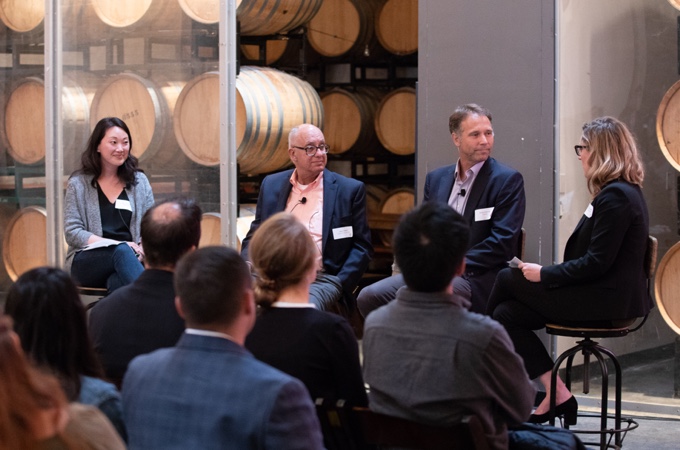“According to the Mayo Clinic, the person you report to at work is more important for your health than your family doctor.” —Bob Chapman, CEO of Global Manufacturer Barry-Wehmiller
Last month, Collective Health’s fireside chat brought together business leaders from across the Bay Area to discuss the implications of modern management practices, and what companies are doing to build and protect healthy workplace cultures.
The fireside chat featured Stanford Graduate School of Business Professor, Jeffrey Pfeffer in conversation with Alice Vichaita, Head of Global Benefits at Pinterest, and Misha Palecek, Chief Development Officer at DaVita Healthcare Partners. The panel explored the core themes in Professor Pfeffer’s new book, “Dying for a Paycheck.”
Here are four key takeaways from the event:
01. The relationship between employers and employees has changed
According to Prof. Pfeffer, there has been a fundamental change over the years in the relationship between companies and their employees.
“When people come to work in an organization, they entrust their wellbeing to that organization,” he said. “Organizations used to take that responsibility seriously. Now it’s all about the money, and (organizations) don’t see themselves as stewards.”
With more work being done remotely, automation eliminating some positions, and layoffs becoming increasingly common, many employees feel little sense of community at work, and have stopped feeling like stakeholders in the organizations they work for, Prof. Pfeffer said.
02. Claims data can reveal a toxic workplace
According to Prof. Pfeffer, employee stress levels can be measured by taking a close look at health insurance claims data.
How many employees begin taking antidepressants after joining the company? Does the use of antidepressants or other mental health interventions vary from one department to another, or spike when a new CEO comes on board?
Company leaders can use such information to identify problem areas in the organization and implement changes that make workers healthier and happier, Prof. Pfeffer said.
03. Workplace health starts in the C-Suite
While employees in various roles can influence company culture, the fundamental changes that make a healthier workplace are handed down from the C-Suite.
Company leaders can access the tools to properly diagnose problems, they have the authority to change company policies for the better, and they have the responsibility to be stewards of company culture from day one.
Whether a company has 1,400 employees, as Pinterest does, or 60,000 like DaVita, the unique culture of the organization is a topic that comes up regularly among company leadership, Ms. Vichaita and Mr. Palecek said.
And according to all three panelists, decisions on how to build and foster company culture are made at the executive level—without exception.
04. Companies of all sizes can build and foster a healthy workplace
At DaVita, “intentionality rules” when it comes to establishing and maintaining a healthy work culture, Mr. Palecek said. Company leaders are dedicated to keeping tens of thousands of employees happy, healthy, and performing at the top of their game.
Pinterest partners with Collective Health to administer their employee health benefits. Their team knows that a happier, healthier workforce not only helps the company attract and keep top talent in a fiercely competitive business, but improves their bottom line.
“In recruitment and retention, it’s all about benefits,” Ms. Vichaita said.



